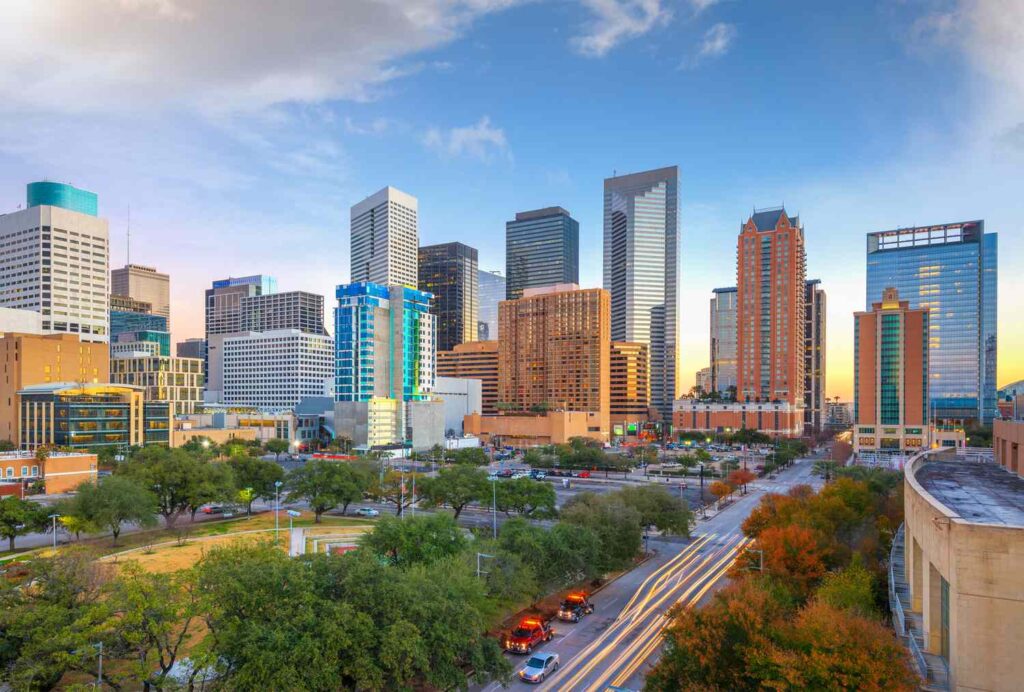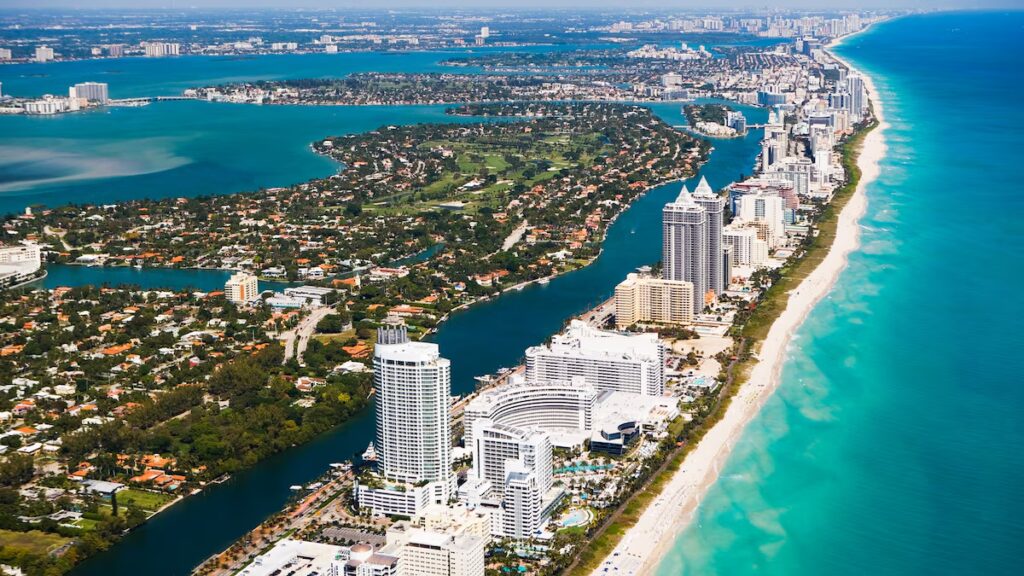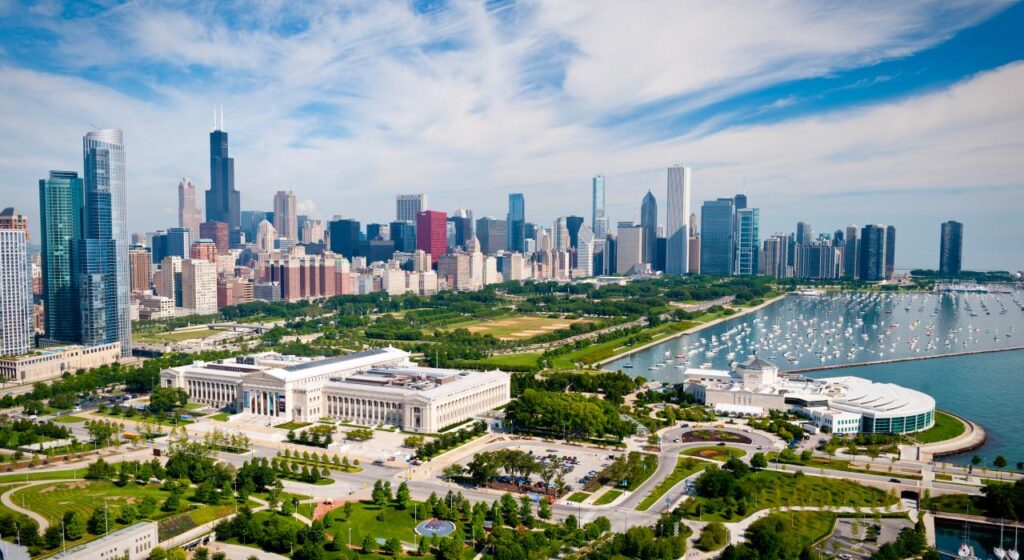A new study from RentCafe revealed why renters across the U.S. are finding it more difficult to find apartments as the summer moving season heats up. Encouraged by Florida’s increasing popularity, the renowned Miami metro solidifies its position as the most sought-after rental destination, with Chicagoland looming as a formidable competitor because to its diversified economy and comparatively low cost of living when compared to other major coastal towns.
The Midwest is still the most competitive area for renting at the beginning of the moving season, which is a result of the combination of affordable housing and employment opportunities. At the same time, it is far more difficult to find apartments in Florida and California than it was at this time last year.
In the meantime, Houston is seeing fierce competition for tenants, primarily as a result of a rise in lease renewals and a fall in newly constructed units.
Remarkably, North Jersey’s rental market has been softer, as seen by a significant decline in its RCI score from year to year. Rather, the rental market in Manhattan, New York, has gotten more competitive than it was a year ago, making it more difficult for those looking for an apartment.
Many tenants are looking into alternative housing options that better suit their demands as a result of escalating living and housing prices. However, in the beginning of the 2025 moving season, which rental markets in the U.S. are the most competitive?
H-Town Coming ‘Round
For tenants hoping to lock in an apartment, a number of important markets have grown more competitive during the past 12 months. As the moving season gets underway, Houston is the #1 trending rental market in the country. Development initiatives, a thriving medical industry, and a robust economy fueled by oil are drawing workers and increasing the need for homes.
To be more specific, Houston’s RCI score increased by 10.4 points to 75.3, placing it in 28th place nationwide. The 2.9% increase in lease renewals is the cause of this spike, which raises the rate to 63.2%. Meanwhile, supply growth fell to 0.48% from 1.68% the previous year, indicating a dramatic slowdown in new construction.

RentCafe.com examined the 139 major U.S. markets with data available, concentrating on the five essential parameters for rental competitiveness, in order to determine the hardest cities in the country for apartment seekers. The findings were as follows:
- Number of days apartments stayed vacant
- Share of rental apartments that were occupied
- Number of prospective renters competing for an apartment
- Percentage of renters who renewed their leases
- Share of new apartments completed recently
Top 10 Most Competitive Rental Markets at the Start of Rental Season 2025
| Rank | Market | Competitive Score | Average Vacant Days | Occupied Apartments | Prospective Renters | Lease Renewal Rate | Share of New Units |
|---|---|---|---|---|---|---|---|
| 1 | Miami | 96.7 | 36 | 96.6% | 21 | 74.7%74.7%74.7% | 0.40% |
| 2 | Suburban Chicago, IL | 85.1 | 44 | 95.6% | 14 | 70.6%70.6%70.6% | 0.14% |
| 3 | Broward County, FL | 85.0 | 41 | 95.2% | 14 | 70.7%70.7%70.7% | 0.82% |
| 4 | Eastern Los Angeles County, CA | 83.9 | 42 | 96.1% | 18 | 57.8%57.8%57.8% | 0.30% |
| 5 | Suburban Philadelphia, PA | 81.7 | 49 | 94.9% | 11 | 77.9%77.9%77.9% | 0.10% |
| 5 | Manhattan, NY | 81.7 | 45 | 95.9% | 11 | 70.0%70.0%70.0% | 0.15% |
| 7 | Chicago | 81.1 | 44 | 95.0% | 13 | 62.6%62.6%62.6% | 0.23% |
| 8 | Lansing-Ann Arbor, MI | 80.6 | 43 | 95.3% | 9 | 69.4%69.4%69.4% | 0.32% |
| 8 | Bridgeport-New Haven, CT | 80.6 | 45 | 94.7% | 12 | 65.8%65.8%65.8% | 0.05% |
| 8 | Brooklyn, NY | 80.6 | 46 | 96.7% | 12 | 69.4%69.4%69.4% | 0.61% |
Factors & Trends Making Rental Competition More Aggressive Across the U.S.
Notably, limited supply has caused lease renewal rates to rise from 62.4% a year ago to 63.8% at the beginning of this rental season, which has helped maintain the national occupancy rate at 93.3%. As a result, even while the average vacancy period stays at 46 days, there are now an average of nine renters competing for each vacant unit, up from eight a year ago.
U.S. Highlights — Leasing Units & Regional Differences
- The typical tenant in the country remains in their apartment for 29 months. The average length of a new lease is 12 months, and renewals last a further 12 months.
- The longest average durations are found in the Northeast (39 months), with Brooklyn, NY, having the longest average (53 months).
- With an average of 13 months, renters in the Northeast also sign the longest new lease agreements; renters in Brooklyn typically sign 14-month leases.
- With an average of 13 months, lease renewals are also the longest in the Northeast. With average renewal durations of 15 months, Brooklyn is once again in the lead.
This year, RentCafe specialists added new lease terms, renewal lengths, and the average length of stay for tenants to their analysis. It’s interesting to note that initial lease lengths and renewal behavior are strongly correlated. Accordingly, renters who sign lengthier leases are more likely to do so for longer periods of time, and renewal rates are greater in markets where renters stay longer.
RentCafe computed a Rental Competitiveness Index (RCI) to gauge the competitiveness of the U.S. rental market at the beginning of the 2025 rental season. With a current national RCI score of 74.6, the rental market is extremely competitive.
Even though new apartment development peaked in 2024, the 2025 rental season is off to a rough start. Actually, compared to the beginning of the moving season last year, just 8% of the major markets under analysis have indicated any signs of relaxing. Additionally, there are still not enough rental units available, even if the number of available flats has increased by 0.72% as opposed to 0.61% the previous year.

Following an extended period of cooling, Florida’s rental market is once again heating up, driven by younger renters, such as millennials and Gen Z, drawn by the state’s lack of income tax, job possibilities, and affordability, as well as seniors looking for a warmer environment.
As a result, with an RCI score of 80.9 (up from 78.9 a year ago), Florida is 6.3 points above the national average and the hottest region for apartment hunters at the beginning of 2018 moving season. Second place goes to the Northeast, whose RCI increased 2.3 points to 79.4 year-over-year.
Similar to Miami, Broward County’s apartment market has been more competitive over the past year and is currently ranked third in the US. Strong demand from young professionals, families, and retirees in towns like Fort Lauderdale, Pembroke Pines, Hollywood, and Miramar, FL, caused its RCI score to rise 7.7 points to 85 during the previous 12 months.
However, despite strong demand, Broward County’s apartment supply increased by just 0.82% in recent months, compared to 1.21% a year before. Furthermore, the lease renewal rate increased from 67.3% to 70.7%, indicating that many people are still unable to afford homeownership. Overall, less than 5% of rentals are so available. Units now get 14 applicants, up from 13 the previous year, and fill in 41 days, which is Florida’s second-fastest time.
Rental Market Competitiveness at the Start of Rental Season — National (2025)
| 2025 | Metrics | 2024 |
| 9 | Renters competing for a vacant apartment | 8 |
| 46 | Average number of days rentals were vacant | 46 |
| 0.72% | of the available apartments that were built | 0.61% |
| 63.8% | of renters who renewed their leases | 62.4% |
| 93.3% | of apartments that were occupied | 93.3% |
Chi-Town Coming in Hot for Summer
The Midwest’s more relaxed lifestyle continues to appeal, as seen by the fact that Chicagoland is still a very difficult region to look for an apartment. Two-thirds of the population in this area is working-age people (ages 18 to 64), which increases demand for rental housing because younger persons and professionals are more likely to rent than buy, particularly as owning becomes more and more unattainable.
After nearly overtaking Miami a year ago, Suburban Chicago continues to be the second-hottest rental market in the country, albeit by a significant margin, with an RCI score of 85.1 that is 11.6 points lower than Miami’s.
Rental Competitiveness in Chicagoland Start of Rental Season 2025 vs. 2024
| Suburban Chicago | 2025 | 2024 | Chicago | 2025 | 2024 |
|---|---|---|---|---|---|
| Competitive Score | 85.1 | 83.6 | Competitive score | 81.1 | 73.4 |
| Average Vacant Days | 44 | 44 | Average vacant days | 44 | 46 |
| Occupied Apartments | 95.6% | 95.2% | Occupied apartments | 95.0% | 94.2% |
| Prospective Renters | 14 | 13 | Prospective renters | 13 | 11 |
| Lease Renewal Rate | 70.6% | 68.7% | Lease renewal rate | 62.6% | 60.0% |
| Share of New Units | 0.14% | 0.00% | Share of new units | 0.23% | 0.61% |
In addition to locals looking for a place to rent, tenants priced out of Chicago are increasingly moving to Illinois suburbs including Aurora, Naperville, Joliet, and Elgin. However, there are still limited rental alternatives in Suburban Chicago because there haven’t been many new apartments added recently.
As a result, at the beginning of the moving season, over 70% of existing tenants decided to extend their leases (up from 68.7% a year earlier), increasing the occupancy rate to 95.6%, which is marginally higher than it was the previous year. With flats taking an average of 44 days to fill and 14 renters now competing for each vacant unit (up from 13), competition has also increased.

Similar to the Northeast, the Midwest has three rental markets in the top 10 and seven in the top 20 nationwide. The Lansing–Ann Arbor metro area in Michigan is the third most competitive rental market in the Midwest, behind Suburban Chicago and Chicago proper. In the past year, the RCI score increased by 5.7 points to 80.6, tying Brooklyn, NY, and Bridgeport-New Haven, CT, for eighth place nationally.
The area’s housing supply increased by 0.32% in recent months, but that is still well short of meeting demand, even though there were no new unit deliveries for the majority of last year. Rather, that deficit encouraged more tenants to remain in their current rental properties: the lease renewal rate increased by 5.3 percentage points annually, the biggest gain among major Midwestern markets, to over 70%.
The “City of Angels” Rental Markets & Competition Tighten Following Wildfires
At the beginning of the moving season, the Los Angeles (LA) apartment market grew substantially tighter, as was to be expected after the disastrous wildfires in early 2025. Competition for available rentals grew as a result of the displacement of many residents and the rising demand for housing, which raised all metrics examined.
In particular, lease renewals increased 5.1% in the last year, which is among the greatest increases in the country. This increased to 57.8%, leaving less than 4% of units vacant. LA’s supply of new flats is only increasing by 0.3% following a period of no new openings. Renters per unit increased from 14 to 18 as a result, and vacancies now fill in 42 days, which is three days quicker than it was the previous year.

Silicon Valley’s housing supply (ranked #13 on the list) increased by 1.02% due to new apartment construction in northern California, but demand is still high. In places like Mountain View, Palo Alto, and Cupertino, where an increasing number of tech workers are returning to the office, lease renewals increased 2.7% year-over-year to 56.8%, bringing occupancy to 95.3%. These days, each unoccupied apartment draws 12 renters and is occupied in 39 days.
Similarly, almost 95% of San Diego’s rental apartments are now occupied, and 56.3% of leases are being renewed. Apartments continue to fill in 43 days on average, and competition has increased with 12 tenants per unit (up from 10) despite a mere 0.39% increase in housing supply. With more renters opting to stay put than the previous year, the national RCI score of 74.6 indicates a very competitive rental market at the beginning of the 2025 season.
Miami further maintains its position as the most competitive rental market in the country, separating itself from its nearest rival, Suburban Chicago, thanks to Florida’s newfound attraction. Amidst a sharp decline in newly constructed apartments throughout Texas, Houston has emerged as the largest rental center with the quickest rate of growth. The growth of the Lone Star state in the minor market category is mirrored in Lubbock, Texas.
To read more, click here.






